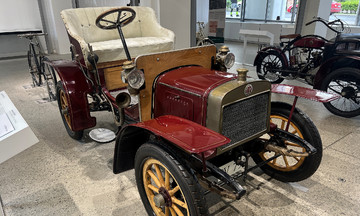In early September, on Highway 4A near Na Sam commune (Lang Son), a truck lost control while speeding around a bend, spinning like a compass in the middle of the road. Fortunately, no oncoming vehicles were present at that time. The incident highlights how a single moment of carelessness can turn a routine driving maneuver, such as cornering, into a dangerous accident.
The most common causes of losing control during cornering are excessive speed, sudden braking, or abrupt steering. This loss of control is more likely to occur with heavy trucks carrying substantial loads and having a high center of gravity. In such cases, reduced road traction (e.g., during rain) or worn tires can cause the vehicle to skid, fishtail, or even roll over. Any type of vehicle faces similar risks if the driver lacks proper handling skills before turning.
When a vehicle enters a curve, it's subject to centrifugal force. Consequently, if the steering wheel is turned to the left, occupants feel a pull to the right, and vice versa. If the speed exceeds the tires' grip, the vehicle may skid or spin. Braking hard during a turn shifts the weight forward, further reducing rear tire traction and increasing the risk of losing control.
When carrying heavy loads, skidding is even more likely. The increased weight creates higher inertia, making sudden deceleration difficult and increasing the tendency to swerve during turns. Uneven load distribution, with the center of gravity shifted to one side, can cause the vehicle to tilt, raising the risk of rollover. In many cases, a loaded truck is more prone to skidding than an empty one due to the increased inertia and centrifugal forces. The added weight compresses the tires, reducing their grip, especially during sharp turns.
To avoid dangerous situations, drivers should reduce speed before entering a curve, never brake suddenly mid-turn, and maintain a steady steering wheel, turning smoothly rather than jerking it. Drivers should also look ahead and select the appropriate gear before approaching a curve, especially with heavy vehicles. Using a lower gear and engine braking enhances tire grip, reducing reliance on brakes. Passenger cars can also employ this technique when descending hills or navigating tight corners, particularly on wet or gravelly roads.
Besides driving skills, tire condition is critical for safe cornering. Underinflated or excessively worn tires significantly reduce grip, increasing the risk of skidding even at moderate speeds. Maintaining the recommended tire pressure, replacing worn tires, and selecting tires suitable for the operating conditions will minimize the risk of skidding. Regular suspension and steering system maintenance are also essential for vehicle stability.
Ho Tan










